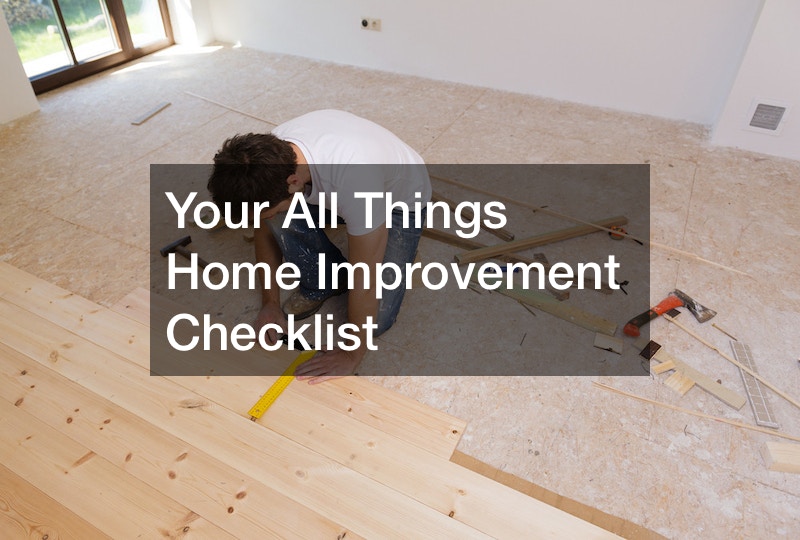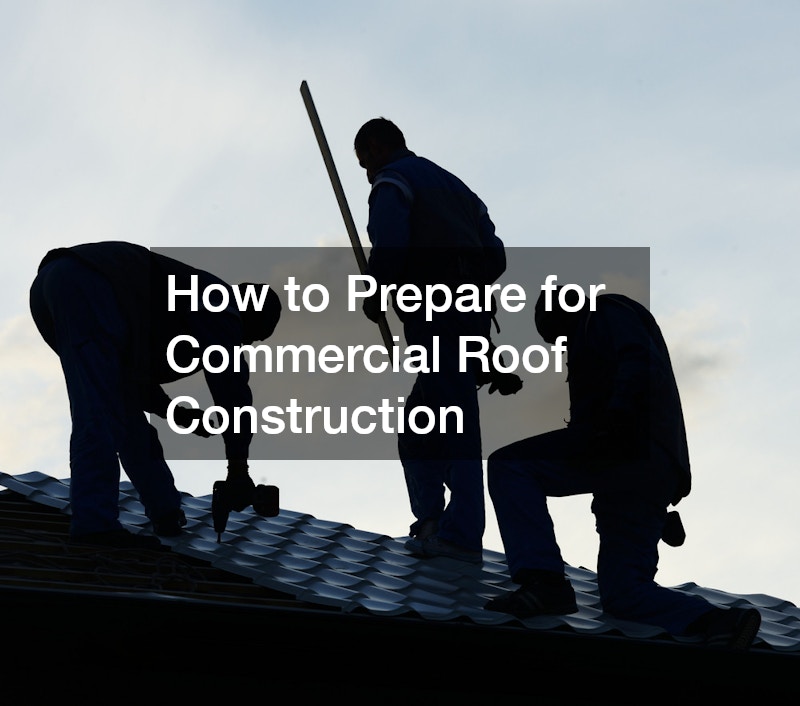
Home improvement is a rewarding and exciting endeavor that can make your space more comfortable, functional, and beautiful. It can also increase your property value and save you money on your energy bills. However, home improvement can also be challenging and complex, especially if you are unsure of where to start. We understand this and want to make things easier for you with this all things home improvement checklist. Read it to the end.
1. Research Some Different Places to Store Your Extra Stuff
Top on all things home improvement checklist is deciding where to store home items during renovation, especially if you have limited storage space but don’t want to throw away or donate the valuables. An extra storage frees up some space, reduces clutter, and creates a more comfortable and enjoyable living environment.
The best storage services store your items safely and securely depending on the nature of the stuff. For example, perishable goods require a climate-controlled environment. Similarly, if you have a lot of bulky stuff, you should search for storage services with plenty of space.
Next, consider the security and accessibility of the storage service. While the priority is to keep your belongings safe from theft, damage, or loss, ensure you can access them easily whenever needed. With the numerous options, the ideal choice should be affordable and within your budget. Compare the prices of different storage services and see what features and benefits they offer for the price. Also, look for discounts and special offers to save money on your storage fees. Depending on your household items, company, and the size of stuff, you can expect to pay between $20 and $450 for a storage unit, according to Home Advisor.
2. Hire Professionals to Check on Your Septic Services

The next thing on an ideal all things home improvement checklist is maintaining your septic system. The wastewater disposal system consists of a septic tank, which separates solid waste from liquid waste, and a drain field, where the liquid waste is filtered and absorbed by the soil. In general, the septic system helps collect and treat the wastewater from your house.
With time, your septic system can get clogged due to sludge or solid wastes, causing odors, backups, and leaks. To prevent these drainage problems, you should hire septic services to clean your septic system every three years, according to the United States Environmental Protection Agency.
A septic service is a company that deals with septic system installation, maintenance, and repair. Do due diligence and ask for recommendations from past clients to ensure you hire a reliable and qualified septic service. According to Angi, the average cost of a septic tank pump is $400, though the price range between $225-$600 for most residential tanks.
3. Have Your Drains Cleaned Regularly
Your all things home improvement checklist is incomplete if you don’t have a plan to clean your drains regularly. Cleaning your drains regularly helps maintain the hygiene, functionality, and safety of your plumbing system. Clogged or dirty drains can cause bad odors (due to the accumulated waste, food particles, and debris) and slow drainage, which leads to flooding.
To avoid such inconveniences, you should clean your drains at least once every two years, as advised by Angi. Whereas you can manage some minor drain cleaning, you should hire a professional plumber for more thorough and effective cleaning. Professional plumbers have the right tools and skills to inspect, diagnose, and clear blockages and solve your drain issues.
Thanks to their extensive knowledge and expertise, they can advise you on how to prevent future problems and maintain your plumbing system in good condition. The cost of hiring a professional plumber to clean your drains ranges from $125 to $360, according to Forbes. The actual cost will depend on various factors like the severity of the clog, the type of drain, and the cleaning method.
4. Replace Your Water Heater

Do you like the look of your old water heater (be honest)? Well, it’s more concerning if the unit is inefficient and ineffective. Replacing your water heater with contemporary energy-saving models with improved performance and safety will save money on energy bills and enhance your living quality. Therefore, replacing your water heater should rank at the top of your all things home improvement checklist.
According to Angi, water heaters last seven to 15 years with proper care. If your water heater is old, leaking, inefficient, or inadequate for your needs, you should consider replacing it with a new one. There are numerous types at your disposal, including such as hybrid, solar, heat pump, and tankless water heaters.
However, replacing a water heater is not a simple DIY project. It involves plumbing, electrical, or gas connections, as well as venting and safety requirements. Therefore, it is advisable to hire a professional plumber or contractor with the requisite skills, tools, and experience to handle the job safely and correctly. They can also advise you on the best type, size, and location of your new water heater, as well as dispose of your old one properly.
The cost of replacing a water heater varies depending on the type, size, and installation of the new unit, as well as the removal and disposal of the old one. According to Angi, the average cost of replacing a water heater ranges from $880 to $1,768, with most homeowners spending around $1,294. Ask for a free estimate from different plumbers or contractors, compare their prices, and choose the most affordable.
5. Speak With an Electrical Professional When Things Break
Electrical problems are a safety risk and costly if improperly handled. They can cause shocks, fires, power outages, or damage to your appliances and devices. Therefore, you should never attempt to fix the problems without the necessary skills and experience. Instead, contact a licensed and qualified electrician who can inspect, diagnose, and repair any electrical issues in your home safely and efficiently. When drafting your all things home improvement checklist, include engaging an electrical professional.
Some common signs you need to be an electrical professional include flickering lights, buzzing or humming noises, sparks or smoke, burning smells, tripped circuit breakers, or hot-to-the-touch outlets. If you notice these signs, turn off the power around the affected area and call an electrician as soon as possible. Don’t ignore or hesitate to address electrical problems, as they can worsen and pose a serious risk to your home and family.
The cost of hiring an electrical professional will depend on the type and complexity of the problem, the location and accessibility of the wiring, and the electrician’s rates. Expect to spend between $161 to $519 if Home Advisor information is anything to go by.
6. Check on Your HVAC System

Checking on your HVAC system is yet another thing that should feature in your all things home improvement checklist. This unit regulates the air quality and temperatures of your home, ensuring that you and your family enjoy a comfortable and healthy living environment. Unfortunately, your HVAC system can develop issues with time, affecting its performance and safety. In such cases, the best you should do is to call professional AC replacement services.
Professional AC replacement services provide a comprehensive evaluation of your current system, identify problems, and recommend the best course of action, whether it’s repair or replacement. Moreover, they can offer expert advice on the latest HVAC technologies and energy-efficient models that could save you money in the long run. Finally, they can ensure that your new system is sized properly and installed according to industry standards, which is crucial for optimal operation and longevity.
When selecting an AC replacement service, look for companies with certified technicians, a track record of quality service, and positive customer reviews. Also, get multiple quotes to compare prices and services offered and make your hiring decision.
7. Purchase Extra Propane
Are you looking for more stuff to add to your all things home improvement checklist? Consider purchasing extra propane for your home. Propane is a versatile and efficient fuel for cooking, heating, water heating, and powering appliances. Extra propane ensures that you have a reliable and uninterrupted source of energy for your home needs, especially in case of emergencies or power outages.
Propane is also an environmentally friendly and cost-effective fuel, as it produces less greenhouse gas emissions than other fossil fuels and electricity, and it can help you save money on your energy bills. According to the U.S. Department of Energy, propane costs up to 50% less than electricity per British thermal unit (BTU) of energy produced.
To purchase extra propane for your home, evaluate your energy needs. Next, find a reputable and licensed propane supplier. If they do home delivery and refill your propane tanks at their location, the better. Finally, you should compare the prices and services of different propane suppliers and choose the best value and quality for your needs.
8. Schedule for an Expert to Repair Your Pool

A pool is a great feature that can enhance the value and beauty of your home. However, it also requires regular maintenance and repair to keep it in good condition. If you notice any signs of damage or malfunction in your pool, such as cracks, leaks, algae growth, cloudy water, or faulty equipment, you should add the pool to your all things home improvement checklist and then schedule an expert to repair your pool as soon as possible.
Pool repair contractors inspect your pool, diagnose the problem, and provide the best solution. They can also advise you on how to prevent future issues and keep your pool clean and safe. Pool repair experts have the skills, tools, and experience to handle any pool problem, from minor fixes to major overhauls. They can also offer you a warranty and a guarantee for their work, giving you peace of mind.
When choosing a pool repair expert, look for someone licensed, insured, and bonded. Also, check their reputation, reviews, and references to see what other customers have to say about their service. Additionally, get several estimates from different pool repair experts to compare their prices and services. According to Home Advisor, the average pool repair cost ranges from $260 to $1,300, depending on the type and extent of the damage.
9. Ask Experts to Remove Your Dangerous Trees
You’ve probably heard that trees are poems that nature writes. The bottom line is they are important – but not all. Dangerous trees pose a threat to family and property safety. For example, a dead, diseased, damaged, leaning, or overgrown tree is considered dangerous, as it can fall or drop branches on your roof, windows, cars, power lines, or people. Similarly, a tree that is invasive, poisonous, or allergenic can harm your lawn, garden, and pets and cause health issues. For these reasons, you should include removing your dangerous trees in your all things home improvement checklist.
Removing dangerous trees improves your home’s curb appeal, value, and safety. A well-maintained and attractive landscape can make your home more inviting, appealing, and desirable to potential buyers or visitors. Moreover, removing dangerous trees can prevent costly and hazardous damages, such as roof leaks, broken windows, dented cars, and injuries from falling trees or branches.
Ensure you find a qualified and experienced tree removal services in your area that can handle the job safely and efficiently. Schedule an appointment for an inspection, get an estimate, and remove the dangerous trees. Depending on the size, condition, and location of the tree, the cost of tree removal can range from $150 to $1,500, according to Home Advisor.
10. Inquire About Replacing Your Garage Door
The last thing on your all things home improvement checklist is to inquire about replacing your garage door. A garage door is a large and movable door that covers the entrance of a garage, a space where you can park your car or store your belongings. It protects your car and other items from theft, vandalism, or damage by animals or weather.
However, over time, it can break down or wear out due to malfunction, age, or style. Replacing your garage door can enhance the value of your home. Ensure you choose a new garage door that matches your home’s style and color and is designed with features such as a smart operation for enhanced security and easy operation.
You should contact a residential garage door replacements professional for garage door installation, maintenance, and repair. They help you choose the best garage door that suits your needs, preferences, and budget. To find an experienced and reputable garage door replacement service, check socials and websites. Ensure they have positive ratings, comments, and feedback. You can also ask for referrals from past clients and family members.
This all home improvement checklist places you in a better position to improve your home. Now, it’s upon you to take action and begin repairing or upgrading as explained, and you will have a sparkling and inviting home within no time. Just remember to work with professionals to avoid costly mistakes.




